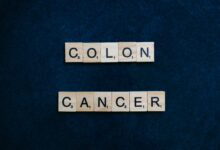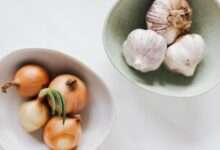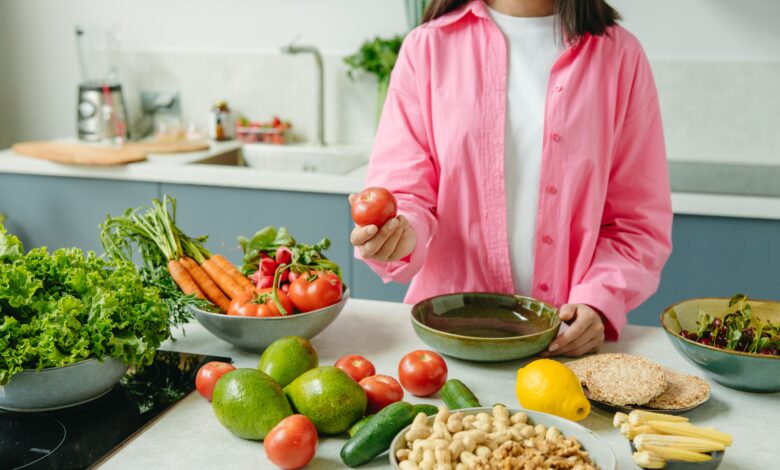
Anti-cancer food plays a role in cancer prevention by helping the body to limit the growth of cancer cells. Some foods known for their anti-cancer properties can protect the body while others can promote the appearance of pre-cancerous cells.
The main points of this diet are:
- Limit foods high in sugar and saturated fat;
- Consume more dietary fiber;
- Have a diet rich in fruits and vegetables;
- Avoid excess red meats and cold cuts;
- Decrease alcohol consumption.
General recommendations
The anti-cancer diet has many benefits, it allows to:
- Achieve and maintain a healthy weight;
- Prevent the occurrence of cancer and avoid recurrences;
- Arm the body to better defend itself against cancer;
- Better support the treatments administered (chemotherapy, radiotherapy, etc.);
- Compensate for the expenses of the organization related to the fight against the disease.
Diet: a role in cancer prevention?
Food is one more weapon against cancer, not the only weapon against this disease.
The role of diet in the development of cancer is complex. However, certain foods are full of anti-cancer molecules whose daily consumption would limit the growth of pre-cancerous cells.
It seems clear that no food or supplement is able to protect against cancer. Instead, we must bet on a wide variety of anti-cancer molecules, consumed in large quantities and on a constant basis.
To prevent the risk of cancer, it is necessary to limit the pro-carcinogenic foods or those which create an environment favorable to the formation of cancer. Cancer prevention is therefore possible to a certain extent.
In 2007, the World Cancer Research Fund (WCRF) published a report including 10 recommendations to prevent cancer. This report comes from the largest study ever conducted on the link between lifestyle habits and cancer.
For 5 years, 500,000 studies have been evaluated, as well as risk factors for 17 types of cancer. The recommendations come from 21 leading experts who collaborated with 234 oncologists.
These recommendations should not replace medical cancer treatments.
Avoid foods that are too fatty
Limiting the consumption of foods that are too fatty reduces the risk of the following cancers:
- esophagus;
- pancreas;
- kidneys ;
- endometrium;
- breast (in postmenopausal women);
- colorectal.
Overweight and obesity also increase the risk of gallbladder cancer.
Adipocytes (fat cells), especially around the waist, contribute to the production of growth hormones which, in high amounts, increase the risk of cancer.
They can also release hormones, such as estrogen, which also increase the risk of cancers, such as breast cancer.
In prevention: calculate your body mass index (BMI) and measure your waist circumference.
Limit the meat
Limiting meat consumption is recommended to reduce the risk of cancer. In addition, it reduces the consumption of saturated fats.
Adopting a semi-vegetarian diet makes it easier to make room for foods that protect against cancer, such as fruits and vegetables.
The semi-vegetarian diet resembles the Mediterranean diet. We avoid or consume very little meat and deli meats and instead eat fish, seafood, poultry, legumes, tofu, nuts and seeds.
Finally, as fats, good quality vegetable oils are recommended, in particular olive and rapeseed oil.
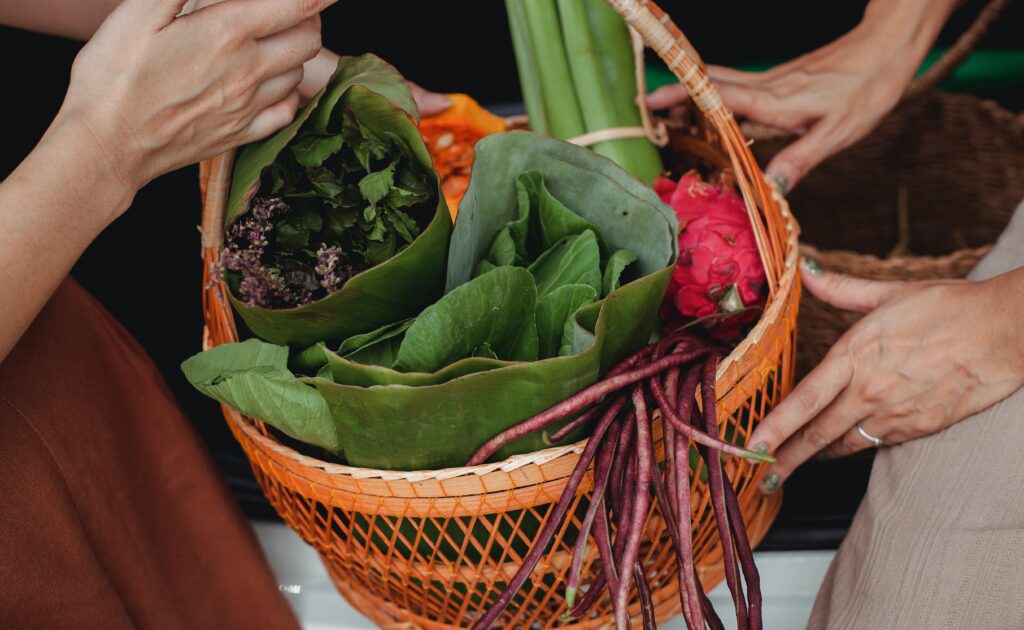
cancer fighting foods
Anti-cancer foods are those that have a positive effect on the development of cancer cells. In general, this positive effect is linked to their interesting content of protective molecules for the organism.
Fruits and vegetables
It is recommended to consume at least 5 servings (150 g minimum) of various vegetables and fruits per day. Fruits and vegetables contain high amounts of phytochemicals, including several antioxidants.
The link between fruit and vegetable consumption helps prevent and reduce the risk of cancer:
- lung;
- of the mouth;
- from the pharynx;
- esophagus;
- stomach;
- be you
- colon;
- of the rectum.
In a cancer prevention food program, it is therefore essential to focus on fruits and vegetables.
Starchy vegetables (potatoes, sweet potatoes, corn, bananas) should not be counted in the 5 servings of fruits and vegetables, but they are not to be avoided.
A portion of fruits and vegetables is equivalent to:
- 1 bowl of salad;
- 1 tomato;
- 1/2 cucumber;
- 250 g of cooked green vegetables;
- 1 apple compote;
- 1 glass of 100% pure homemade juice;
- 1 apple, orange or pear;
- 200g strawberries;
- 10 cherries;
- 2 clementines, 2 kiwis, etc.
Of all the fruits and vegetables on the market, some have greater anti-cancer properties than others and deserve to be given a prominent place in our daily menus. These are red fruits, citrus fruits, crucifers, alliums and tomatoes.
Red fruits: an antioxidant to fight against cancer
Red fruits like blueberries, raspberries, blackberries, strawberries and cranberries are the best antioxidants you can find. They contain one or other of the three anti-cancer molecules (ellagic acid, anthocyanidins and proanthocyanidins).
Note that blueberry or cranberry juice contains far fewer anti-cancer molecules than whole fruit.
Cherries, apples, plums and red grapes also have great antioxidant power.
Citrus fruits for digestive cancers
Citrus fruits such as oranges, grapefruits, lemons and tangerines help prevent cancers, especially those affecting the digestive system: mouth, larynx, pharynx, esophagus and stomach.
Known for their richness in vitamin C, citrus fruits contain several other beneficial chemical compounds. In an orange, there are nearly 200 different ones!
The active principles of citrus fruits are polyphenols and terpenes. Eating citrus fruits in any form is a great way to add cancer-fighting foods to your diet.
Cruciferous (cabbage) source of sulforaphane
Crucifers are recognized as foods that can prevent cancers, especially those of the colon, rectum, bladder, breast, lung, stomach and prostate.
This plant family includes:
- green cabbage;
- red cabbage;
- broccoli ;
- Brussels sprouts ;
- Chinese cabbage;
- kale;
- savoy cabbage;
- collard greens;
- turnip.
The protective effect of crucifers comes, among other things, from their high glucosinolate content and their ability to release 2 classes of compounds with very strong anti-cancer activity: indoles and isothiocynates (according to the book Foods Against Cancer by Richard Beliveau and Denis Gingras).
To make the most of the anti-cancer properties of crucifers, 3 conditions must be met:
- eat them raw or very lightly cooked;
- do not cook them in water;
- chew them well.
Of all the crucifers, broccoli takes the top spot because it’s the best source of sulforaphane, the most potent of the isothiocynates.
Suforaphane would have the power to encourage the body to get rid of toxic substances that can induce cancer.
It could even kill cancer cells, according to Richard Béliveau and Denis Gingras, researchers at Sainte-Justine Hospital in Montreal.
Garlic, onion, leek (alliaceous)
Vegetables from the alliaceae family, such as garlic, onion and leek, play a role in the prevention of stomach and prostate cancer.
Their anti-cancer power comes from the sulfur compounds they contain (allicin, thiosulfinate, thiosulfonates, monosulfides, disulfides and trisulfides).
These molecules are responsible for their characteristic aroma and taste. It is preferable to consume fresh garlic rather than garlic supplements, since the allicin content of the latter is not guaranteed.
Tomatoes
The tomato has anti-cancer properties, these come from the lycopene it contains.
Lycopene is part of the large family of carotenoids, the class of antioxidants that give fruits and vegetables their characteristic colors: orange, yellow and red.
Tomato-based sauces and tomato paste are the most concentrated sources of lycopene, because cooking the tomato increases the bioavailability of lycopene, while fat improves its absorption.
A tomato sauce made with olive oil, for example, is a great way to boost your lycopene intake, which doesn’t mean you have to stop consuming raw tomatoes! A high lycopene intake would be particularly important for preventing prostate cancer.
Legumes and whole grains
Whole grains and legumes contain dietary fiber and have a low energy density. They are therefore more satiating, which contributes to maintaining a healthy weight. The World Cancer Research Fund recommends consuming 25 g of dietary fiber per day to prevent cancer.
By consuming whole grains or legumes at each meal, in addition to 5 servings of fruits and vegetables, it is relatively easy to reach 25 g of fiber per day. Refined starchy foods like white bread are low in fiber and should be limited.
Here is a table of refined starches to limit and complete starches to favor in the context of anti-cancer nutrition.
| Refined starches TO LIMIT | Whole starches TO PREFER |
| Products made with white flour: baguette, sliced bread, sandwich bread, hamburger or hot dog, croissant, pita, bagel, etc.)Rusks and croutons made from white flour· White pasta (spaghetti, macaroni, lasagna, etc.)Couscous _Instant or pre-cooked white rice·Risottorice vermicelliGnocchi _Sweet classic breakfast cereals | High fiber breakfast cereal (containing 3g fiber per serving and less than 5g sugar)Oat flakes and branWhole grains (bulgur, brown rice, wild rice, quinoa, barley, buckwheat or millet)Whole wheat, kamut, spelled, buckwheat or multi-grain pastaMulti -grain, rye or whole wheat biscuitsHomemade bran cakes and biscuitsViennese pastries and breads made from whole wheat or multi-grain flour |
It is recommended to put legumes on the menu. They are very rich in fiber and protein and have a low glycemic index.
Pulses therefore replace meat and are very economical. A quantity of 200 g of cooked legumes corresponds to a portion of meat (100 g).
Turmeric and pepper: allies against cancer?
Turmeric, not to be confused with curry of which it is only one component, comes from grinding the dried rhizome of the Curcuma longa plant, which is part of the ginger family.
Turmeric is one of the components of traditional Ayurvedic medicine in India.
Researchers believe that it could play an important role in the impressive gap between the number of certain cancers in India compared to Western countries.
Curcumin, the active ingredient of turmeric, has various properties, including antithrombotic, cholesterol-lowering, antioxidant properties, as well as a very strong anti-cancer power.
The bioavailability of curcumin is low, but it is greatly increased by the presence of pepper.
Tea and cocoa
Green tea is known for its anti-cancer properties.
Both black tea and green tea come from the Camelia sinensis plant. It is only their post-harvest treatment that results in a different product. Black tea has been fermented, which oxidizes the plant’s anti-cancer molecules and largely destroys their protective power. This is the reason why green teas have more virtues than black teas.
Tea contains catechins, chemical compounds from the polyphenol family that are antioxidants. Catechins more particularly have the capacity to block angiogenesis, that is to say the formation of new blood vessels around the cancerous tumour.
As these new vessels provide oxygen and food for the growth of the tumor, interfering with their formation amounts to preventing the tumor from growing. Thus, the consumption of green tea constitutes a mode of protection against the development of cancer.
The catechin content of tea varies depending on the place of cultivation, the variety of the plant, the harvest season and the processing method. In other words, not all green teas contain the same amount of catechins.
However, we know that, in general, Japanese green teas contain more than Chinese teas. It is always better to get teas in bulk so that you can check the quality of the product (presence or absence of stems or straws).
Regarding the properties of cocoa, recent research shows that, thanks to the flavonoids it contains, it is one of the foods with the greatest antioxidant properties.
Prefer dark chocolate with 70% cocoa. Less sweet than milk chocolate, it contains 3 times more flavonoids. Despite its anti-cancer properties, chocolate should not be consumed in large quantities, as it is still very high in calories (a 100 g bar contains 600 calories!).
Other foods recommended as part of anti-cancer nutrition:
- Lean protein;
- Omega 3 ;
- Homemade and seasonal cuisine;
- Good hydration;
- Physical activity.
- bridge
- Allergies (overview)
- Achluophobia : all about the fear of the dark
- At what age can you do bodybuilding?
- Fatigue in the morning: causes and remedies

What foods are forbidden for cancer?
Unlike anti-cancer foods, certain foods can promote the formation of pre-cancerous cells. Here are the foods to avoid as part of a cancer prevention diet:
- sugar ;
- bad fats;
- salt ;
- the alcohol ;
- Cooked meats.
In prevention, during treatment or to avoid recurrences, it is therefore recommended to limit their consumption as much as possible.
Sweet and fatty products
Studies show that sugary drinks can cause weight gain. This weight gain is an important risk factor for cancer.
Sweetened beverages include soft drinks, sweetened fruit juices and lemonades. To rehydrate, it is best to drink water or take coffee or tea without sugar (less than 4 cups a day for coffee and tea). As for natural fruit juices, it is better not to exceed 1 glass per day.
Similarly, consuming too much fat increases the risk of lung, colon, rectum, prostate and endometrial cancer.
Excess fat alters the balance of the intestinal flora, which is likely to transform bile acids into carcinogenic chemical compounds.
Excess fat also influences hormonal synthesis. Saturated and trans fats as well as excess omega-6 fatty acids are most likely to increase cancer risk. Fat should be no more than 30% of total calories.
For more tips on reducing fat, see our Hypercholesterolemia fact sheet.
Energy-dense foods
Energy density is the amount of calories per gram of food (cal/g). Low energy density means more food for the same number of calories.
Factors that influence energy density are the water, dietary fiber and fat content of a food.
The presence of water and fiber decreases energy density, while the amount of fat and sugar increases it. However, it is the amount of water present in a food that most determines its energy density.
Favoring foods with low energy density can help slow down weight gain, and even lose weight, and thus reduce the risk of cancer related to overweight (especially breast cancer in postmenopausal women, and colorectal cancer).
Classification of some foods according to their energy density:
| Categories | Energy density | Food |
| Very low energy densityPreferred | 0 to 0.6 | Fruits and vegetables, skimmed milk, broth-based soup, fat-free and sugar-free yogurt, fat-free salad dressing, vinegar. |
| Low energy densityPreferred | 0.6 to 1.5 | Starchy fruits and vegetables (banana, potato, corn, turnip, sweet potato), whole grains, whole breakfast cereals, legumes, low-fat meals prepared with lots of vegetables, fat-free fruit yogurt, tofu, tuna, shrimp, turkey, extra lean ham, olives, avocado, soy drink. |
| Average energy densityTo consume with moderation | 1.5 to 4 | Meat, poultry, egg, cheese, vinaigrette, bread, sandwich bread, ice cream, cakes. |
| High energy densityTo limit | 4 to 9 | Croissants, donuts, fries, pizza, cereal bars, peanut butter, bacon, chocolate, cookie, nuts, butter, oil, margarine. |
Examples from The Volumetrics Eating Plan
Be careful, oil, salad dressings, non-hydrogenated margarines and nuts have a high energy density, but they are sources of good fats.
They should therefore not be eliminated, simply consumed in moderation.
Red meats and charcuterie
Red meats include beef, pork, lamb and kid.
Deli meats include meat that is smoked, dried or salted, or with added preservatives. For instance :
- white ham;
- raw ham;
- bacon ;
- bacon, ;
- dry sausages;
- sausage ;
- Grisons meat;
- as well as hot dogs and some sausages.
The World Cancer Research Fund recommends consuming no more than 500g of red meat per week and avoiding deli meats.
Nitrite et cancer colorectal
Red meats and deli meats are associated with a higher risk of colorectal cancer. There is even more evidence for the link between deli meats and colorectal cancer.
This is because deli meats increase the amount of ammonia and other cancer-causing compounds in the large intestine, which can lead to colon cancer.
Nitrites used as a brining, curing and preserving agent in processed meats and deli meats change in the body. They become nitrosamines, carcinogenic chemical compounds.
As a source of protein, it is recommended to favor instead:
- the chicken ;
- Turkey ;
- Fish, ;
- seafood ;
- the tofu;
- legumes.
Cooking at high temperatures
Cooking at high temperature causes the appearance of toxic products:
- hydrocarbons;
- benzopyrenes;
- heterocyclic amines.
The hydrocarbons are found in the charred and crispy part on the surface of the meat.
Benzopyrenes are formed when fat from meat falls on the heat source, the resulting smoke attacks the meat and contaminates it. Heterocyclic amines are produced during the browning of meat.
When cooking meat on the barbecue, here are some tips to apply:
- Remove as much visible fat from the cuts of meat before cooking them.
- In the case of poultry, remove the skin.
- Do not overcook the meat and remove all charred parts before eating.
- Adjust the rack to prevent the food from igniting.
- Some meats can be partially cooked beforehand to reduce barbecue cooking time. You can boil the sausages for a few minutes, for example.
- Wrap food in aluminum foil or lay a sheet of aluminum foil directly on the grates to limit dripping of fat.
- To brush food, use marinade or sauce, not butter or oil. Pork, veal and rabbit benefit from slow cooking, so at a low temperature. You can eat their pink flesh.
- Marinating meat in acidic ingredients (lemon, vinegar) and without oil reduces the production of carcinogens.
Alcohol and Cancer
Alcohol can lead to a risk of cancer. In fact, it is recommended not to exceed the following doses of alcohol:
- for women: 1 drink per day;
- for men: 1 to 2 drinks per day.
Excessive alcohol consumption is believed to contribute to cancers of the larynx, mouth, esophagus, pharynx, breast and liver, in addition to causing liver damage. Indeed, alcohol causes nutritional deficiencies, especially in folic acid, a vitamin with antioxidant properties.
Alcohol or its metabolites affect hormone levels, including leptin associated with obesity. One serving of alcohol is:
- 12.5 cl of wine;
- 250ml of beer;
- 2.5 cl of strong alcohol.
This
Salty foods are probably one of the causes of stomach cancer. Too much salt can cause damage to the stomach lining and cause healthy cells to turn into cancerous cells.
Preserving food in salt (eg smoked salmon) can lead to the formation of carcinogenic substances. During smoking, burning wood produces what are called polycyclic aromatic hydrocarbons, which are suspected of contributing to the development of stomach cancer.
Most of the sodium we consume does not come from the salt we add to our dishes and recipes, but rather from prepackaged and ready-to-eat foods.
Foods served in restaurants, especially fast foods, prepared meals, generally contain large amounts of sodium.
Food supplements
Dietary supplements are not recommended for cancer prevention. Studies show that when taken in excess, they can be protective or induce cancer.
Indeed, if you take a 1000 mg vitamin C tablet, you swallow 14 times the recommended dose of vitamin C, not to mention that this vitamin C (in tablet) is isolated from its natural plant environment.
This is not the case when you eat an orange, because in addition to the vitamin C it contains, the orange provides more than 200 antioxidants that work in close synergy with this vitamin. After having played its antioxidant role, vitamin C would become pro-oxidant, and could influence DNA.
This is because when vitamin C is accompanied by other antioxidants (as in an orange), the latter are supposed to recycle its oxidized by-products and render them harmless. Vitamin C, taken alone and in high doses, could therefore contribute to the formation of cancer rather than to its prevention.
However, this hypothesis remains to be demonstrated in human studies. Vitamin D supplements are the exception. Recently, it has been found that low blood levels of vitamin D are associated with higher risks of colon, prostate and breast cancer (3 of the 4 most common cancers in Canada).
It is easy to understand that this association quickly aroused the interest of researchers in this field of health. It is therefore recommended to take a supplement of 1000 IU of vitamin D per day for adults in the fall and winter. Especially since getting 1,000 IU of vitamin D a day from food is very difficult. In any case, ask your doctor for advice before taking a vitamin D supplement.
Other foods not recommended:
- Excess cheese;
- Whole milk products;
- Processed and prepared meals;
- Fast-food ;
- Fries;
- Breadcrumbs;
- Tobacco ;
- Stress and overwork;
- Sedentary lifestyle.
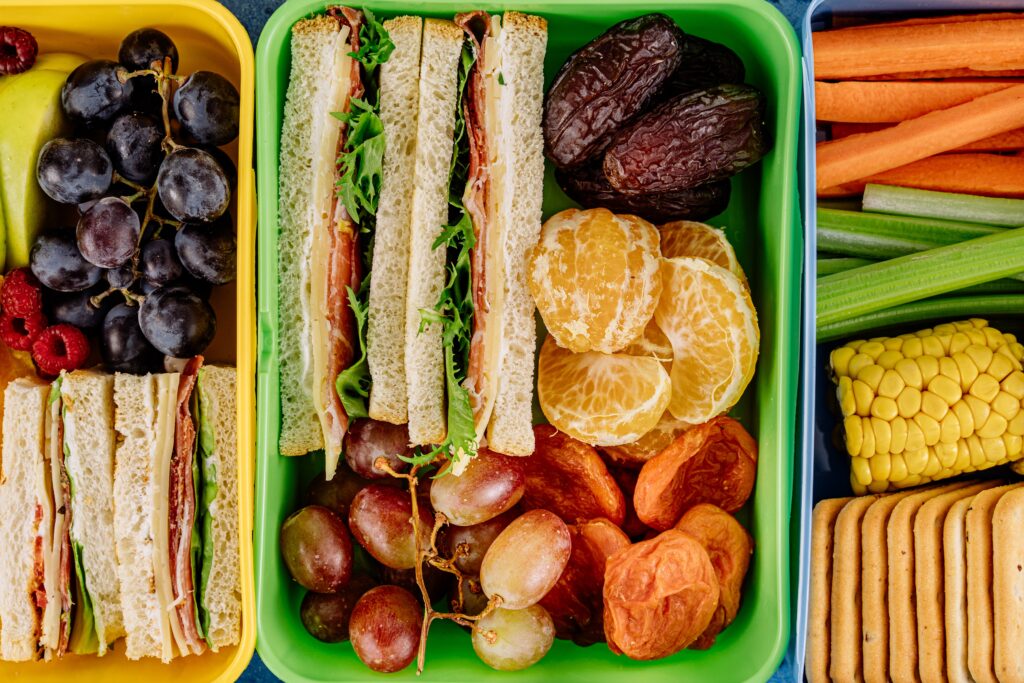
Menu anti cancer
The following menus, developed by SOSCuisine.com, meet all the above recommendations. Here is an example of a menu rich in anti-cancer foods for a woman and a man who wish to prevent cancer or avoid a recurrence.
One-day standard menu – Woman – 1,800 kcal
| Morning | “Geneva” breakfast (orange, wholemeal bread, peanut butter, yogurt and strawberries) |
| Snack | A cup of green tea |
| Midday | My grandmother’s tomato cream, A slice of crispy bread, Pad Thai (rice vermicelli, tofu, shrimp, egg, bean sprouts) and A glass of 0% skimmed milk |
| Snack | Carrot and celery |
| Evening | Chicken with dried fruits, broccoli purée with brown butter, steamed brown rice and plain yogurt |
| Snack | A square of dark chocolate |
One-day standard menu – Man – 2,400 kcal
| Morning | “Geneva” breakfast (orange, wholemeal bread, peanut butter, yogurt and strawberries) |
| Snack | Raw vegetables and cheese |
| Midday | Broccoli soup flavored with Liguria, A slice of bread (whole wheat), Indian butter chicken, Steamed brown rice, Orange and A glass of skimmed milk 0% |
| Snack | A cup of green tea |
| Evening | Lentil and tomato salad with mint, A slice of bread (whole wheat), Spaghetti with tomato sauce and Cream of tofu with berries |
| Snack | A square of dark chocolate |
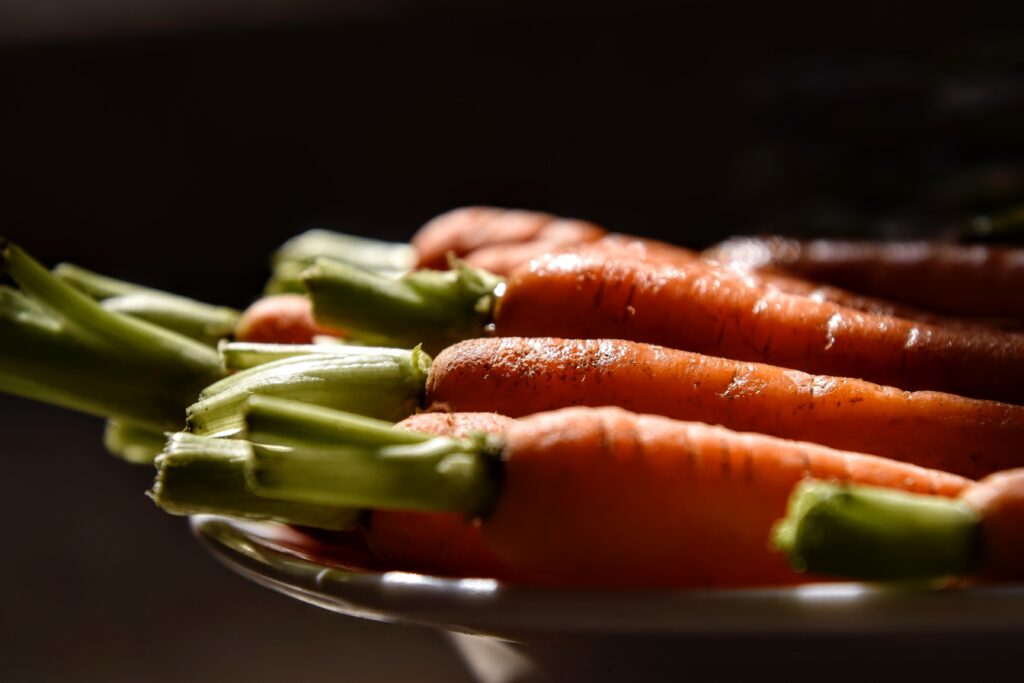
- bridge
- Allergies (overview)
- Achluophobia : all about the fear of the dark
- At what age can you do bodybuilding?
- Fatigue in the morning: causes and remedies
- Prostate Cancer
- Acute bronchitis
- Psychiatry
- Cosmetic surgery
- 10 highly contagious diseases in autumn-winter
For further
Breast, endometrial, prostate cancer and diet rich in soy: what should we remember?
Soy is a legume. Unlike other members of its category, it contains a lot of phytoestrogens. It has long been believed that soy can reduce the risk of hormone-dependent cancers, such as breast, endometrial and prostate cancer. Except that this belief came from studies carried out in countries where a lot of soy is consumed (Japan for example) and this drop in risk could be linked to other factors.
To date, there are not enough studies to confirm or refute the hypothesis that phytoestrogens act like estrogens and contribute to the development of breast cancer. In prevention, integrating soy products (tofu, soy drink, miso, roasted soy beans, tempeh) as part of a varied diet is not contraindicated.
Watch out for moldy cereals or legumes
When food is stored for too long at high temperatures, mold can develop, producing aflatoxins. Cereals such as wheat, barley, rye, corn and oats are likely to be contaminated, as well as legumes, especially peanuts.
Aflatoxins are recognized as a cause of liver cancer. They are produced by Aspergillus flavus and A. parasiticus. In industrialized countries, the use of fungicides reduces the presence of aflatoxin and inspections make it possible to eliminate contaminated stocks.
On the other hand, despite these precautions, you can still end up with contaminated food. For these reasons, always ensure the freshness of the whole grains and dried legumes you purchase.
To find out about Dr. David Servan-Schreiber’s anti-cancer recommendations, consult his booklet Anti-cancer reflexes on a daily basis, also listen to the interview with researcher Richard Béliveau, author of the book Foods against cancer: Health through pleasure to eat well.
Diet and breast cancer: practical daily advice
- Learn about Indian cuisine in order to consume turmeric more often;
- Replace coffee with green tea;
- For dessert, think of a yoghurt with red fruits;
- Consume at least 2 meals of legumes per week;
- Choose whole wheat or whole wheat products as often as possible;
- Make sure to have at least 1 serving of fruits and vegetables with each meal and snack;
- Cook with as many natural ingredients as possible to avoid excess sodium;
- Eat raw cabbage with hummus or cottage cheese dips;
- Add broccoli sprouts to salads and sandwiches;
- Consume vegetable juices containing crucifers;
- Buy red fruits in high season then freeze them to be able to enjoy them all year round;
- Add berries to cake recipes, yogurts or smoothies.


